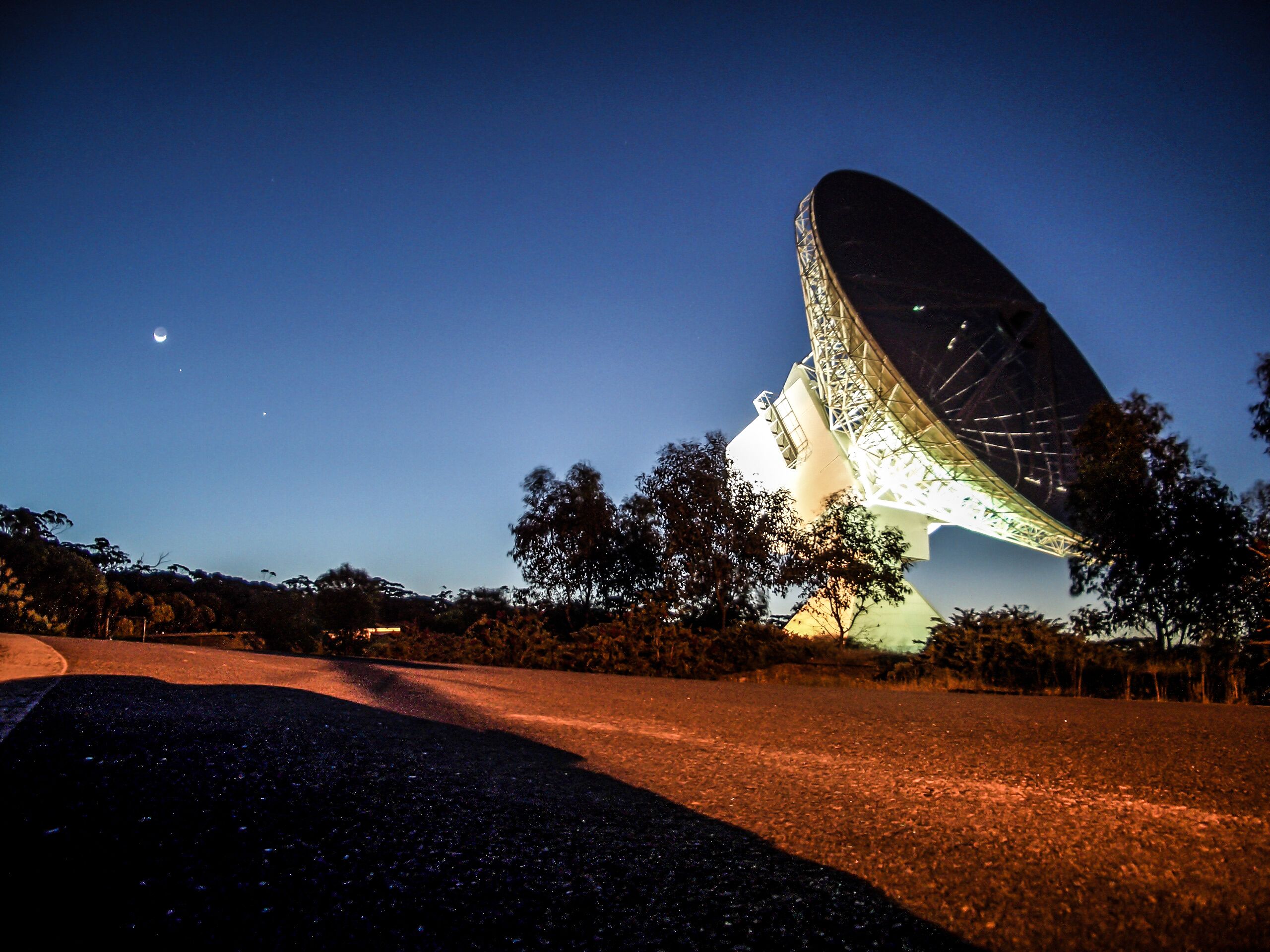Located 130 kilometres north-east of Perth in Western Australia, the New Norcia ground station is one of three deep space stations in the European Space Agency (ESA)'s tracking station network; the other two are located in Cebreros, Spain and in Malargüe, Argentina.
ESA's ESOC control centre in Darmstadt, Germany, remotely controls its interplanetary and astronomy spacecraft and Earth-orbiting satellites via the Estrack network.
Tracking spacecraft with New Norcia

A 35-metre antenna at the station, DSA-1, provides support to ESA's missions exploring our Solar System and observing our galaxy and Universe. It tracks their locations, sends control commands, and reliably receives their scientific data gathered hundreds of millions of kilometres from Earth.
These missions include:
- BepiColombo, which was launched in October 2018 and is on its way to explore Mercury – the closest planet to our Sun – where it will endure temperatures in excess of 350°C
- Mars Express, which is currently orbiting the Red Planet collecting information about its geology, atmosphere, surface environment, history of water and potential for life
- ExoMars Trace Gas Orbiter, which is sampling the Martian atmosphere for methane and other atmospheric gases that are present in small concentrations and performing a vital data relay function for rovers and landers on the surface
- Gaia, a mission launched in 2013 to create the most precise three-dimensional map of the billions of stars within our Milky Way galaxy.
In addition to supporting ESA missions, the station provides tracking support to scientific and interplanetary missions operated by other space agencies like NASA and Japan's JAXA under resource-sharing agreements.
Using its smaller, 4.5-m diameter antenna, NNO-2, the New Norcia station also provides critical tracking services for Ariane, Soyuz and Vega launchers lifting off from Europe's Spaceport at Kourou, French Guiana.
In December 2019, ESA announced that they would be constructing their fourth deep space antenna in their global ESTRACK network at the New Norcia ground station. The new antenna will support upcoming missions including JUICE and Hera.
Fast facts about New Norcia
- In 2016, the New Norcia station acquired signals across more than 1.4 billion km of space from the international Cassini spacecraft orbiting Saturn – the most distant 'catch' as ESA station has ever made.
- Construction of DSA-1 was completed in 2002, and the station has been in operation since 2003.
- A 4.5-m dish at New Norcia, inaugurated in 2016, provides support to tracking launchers and newly launched spacecraft.
- A new antenna is under construction at New Norcia to support upcoming ESA space missions; the new antenna is part of a multi-million dollar collaboration between ESA and the Australian Space Agency.
- CSIRO has been responsible for day-to-day operational support and maintenance at the station since June 2019, the first time an Australian organisation has done so.
- Australia and ESA have had treaties in place since 1979 to enable ESA ground stations on Australian soil to track spacecraft and interplanetary missions.
Located 130 kilometres north-east of Perth in Western Australia, the New Norcia ground station is one of three deep space stations in the European Space Agency (ESA)'s tracking station network; the other two are located in Cebreros, Spain and in Malargüe, Argentina.
ESA's ESOC control centre in Darmstadt, Germany, remotely controls its interplanetary and astronomy spacecraft and Earth-orbiting satellites via the Estrack network.
Tracking spacecraft with New Norcia
A 35-metre antenna at the station, DSA-1, provides support to ESA's missions exploring our Solar System and observing our galaxy and Universe. It tracks their locations, sends control commands, and reliably receives their scientific data gathered hundreds of millions of kilometres from Earth.
These missions include:
- BepiColombo, which was launched in October 2018 and is on its way to explore Mercury – the closest planet to our Sun – where it will endure temperatures in excess of 350°C
- Mars Express, which is currently orbiting the Red Planet collecting information about its geology, atmosphere, surface environment, history of water and potential for life
- ExoMars Trace Gas Orbiter, which is sampling the Martian atmosphere for methane and other atmospheric gases that are present in small concentrations and performing a vital data relay function for rovers and landers on the surface
- Gaia, a mission launched in 2013 to create the most precise three-dimensional map of the billions of stars within our Milky Way galaxy.
In addition to supporting ESA missions, the station provides tracking support to scientific and interplanetary missions operated by other space agencies like NASA and Japan's JAXA under resource-sharing agreements.
Using its smaller, 4.5-m diameter antenna, NNO-2, the New Norcia station also provides critical tracking services for Ariane, Soyuz and Vega launchers lifting off from Europe's Spaceport at Kourou, French Guiana.
In December 2019, ESA announced that they would be constructing their fourth deep space antenna in their global ESTRACK network at the New Norcia ground station. The new antenna will support upcoming missions including JUICE and Hera.
Fast facts about New Norcia
- In 2016, the New Norcia station acquired signals across more than 1.4 billion km of space from the international Cassini spacecraft orbiting Saturn – the most distant 'catch' as ESA station has ever made.
- Construction of DSA-1 was completed in 2002, and the station has been in operation since 2003.
- A 4.5-m dish at New Norcia, inaugurated in 2016, provides support to tracking launchers and newly launched spacecraft.
- A new antenna is under construction at New Norcia to support upcoming ESA space missions; the new antenna is part of a multi-million dollar collaboration between ESA and the Australian Space Agency.
- CSIRO has been responsible for day-to-day operational support and maintenance at the station since June 2019, the first time an Australian organisation has done so.
- Australia and ESA have had treaties in place since 1979 to enable ESA ground stations on Australian soil to track spacecraft and interplanetary missions.
